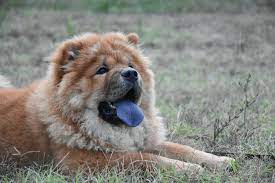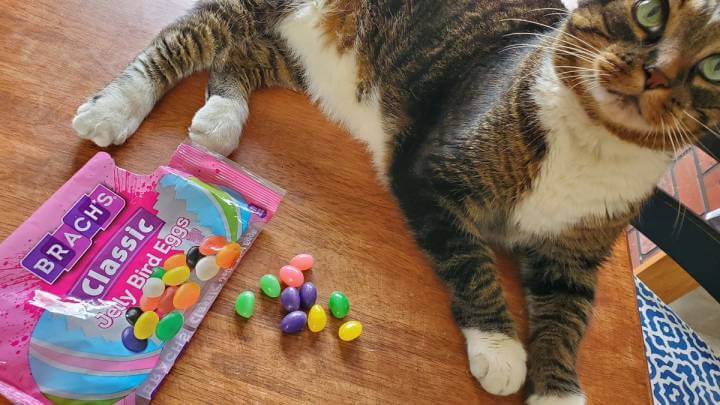Unveiling the Enigma: Which Dog Breeds Sport Unique Purple Tongues?
Embark on a canine journey, and you’ll encounter the fascinating world of blue-purple tongues, a trademark of Chow Chow dogs. Picture this: a tongue adorned with shades ranging from solid blue-purple to sporadic hints of pink, captivating dog enthusiasts and owners alike.
Contents
Beyond The Chow: Purple Spots and Purebred Significance
Interestingly, Chow Chow puppies start their lives with pink tongues, only to undergo a captivating transformation around eight to 10 weeks of age. This mysterious shift to the enchanting blue-purple hue, while leaving behind traces of pink, remains a spectacle. The rationale behind this chromatic canine feature remains elusive, but the culprit is melanin—a pigment responsible for dogs‘ fur, skin, eye color, and uniquely hued tongues.
Yet, the allure of dark blue-purple tongues extends beyond Chow Chows. Enter the Shar-Pei, another distinguished Chinese breed flaunting this mesmerizing trait. Noteworthy is the Golden Retriever, among other breeds, showcasing purple spots on a pink canvas. However, a crucial caveat emerges: a true-blue Chow Chow, in all its purity, never brandishes an all-pink tongue. Pink spots may be present, but the signature remains the captivating blue-purple tongue. A dog resembling a Chow Chow yet sporting a pink tongue is, without a doubt, a deviation from purebred lineage.
The Spitz Family Reunion: Common Traits Among Breeds
Dive deeper into the spitz dog family, and you’ll encounter a tapestry of breeds sharing commonalities in appearance—triangular ears, voluminous coats, and that signature curled tail. Meet the family members:
- Pomeranian
- Keeshond
- Samoyed
- Siberian Husky
- Norwegian Elkhound
- Akita
- Shiba Inu
Ancient Chinese Elegance: Cohesive Aesthetics in Breeds
Delving into ancient Chinese breeds, the canvas expands to encompass:
- Chow Chow
- Shar-Pei
- Miniature Shar-Pei
Despite differing sizes, these breeds paint a cohesive picture, boasting a unified aesthetic with triangular ears, plush coats, and tails gracefully arching over their backs.
A Palette of Uniqueness: Breeds with Distinctive Tongue Colors
Venturing further into the realm of uniqueness, certain breeds adorn themselves with tongues painted in blue, black, or purple shades. Behold these extraordinary canines:
- Phu Quoc Ridgeback
- Thai Ridgeback
- Eurasier
- Tibetan Mastiff
- Airedale
- Bouvier des Flandres
- Dalmatian
- Black Russian Terrier
- Gordon Setter
- Korean Jindo
- Fila Brasileiro
- Siberian Huskies
- Soft-Coated Wheaten Terrier
- Belgian Malinois
- Rhodesian Ridgeback
- Australian Cattle Dog
- Shiloh Shepherd
- Kai Ken
- Mountain Cur
Health Implications of a Purple Tongue in Dogs
Pet owners must be attuned to any changes in their dog’s tongue color. A kaleidoscopic shift, particularly towards shades of blue or purple, could signify a benign phenomenon or an underlying health concern. If in doubt, consulting with a veterinarian ensures the well-being of your canine companion. A purple tongue can sometimes be a sign of health issues such as:
- Cyanosis: Indicates low oxygen levels in the blood.
- Hyperpigmentation: Often harmless but should be monitored.
- Oral tumors: Uncommon but serious if present.
Exploring the vibrant palette of your furry friend’s tongue can reveal unique tales and potential health indicators. Stay informed and proactive to ensure your dog’s health and happiness.
A word of caution: Should your canine companion’s tongue undergo a kaleidoscopic transformation, consulting a vet becomes a prudent choice. It might be a benign shift or a potential indicator of an underlying health concern. Stay attuned to the vibrant palette of your furry friend’s tongue—it may hold the key to a captivating canine tale.
By understanding and appreciating the significance of a dog with a purple tongue, you can better care for and marvel at these unique canines. Whether it’s a Chow Chow, Shar-Pei, or another breed, their distinctive tongues are a testament to the incredible diversity and wonder of the canine world.
Conclusion
The phenomenon of a dog with a purple tongue is not just an aesthetic curiosity but a fascinating aspect of canine genetics and breed history. From the distinguished Chow Chow and Shar-Pei to other breeds with distinctive tongue colors, this unique trait captivates dog lovers worldwide. Understanding the reasons behind this coloration, such as the role of melanin, adds to the allure of these breeds.
- Golden Retriever Pros and Cons: What Every Pet Parent Should Know - 15 September 2025
- Cane Corso Dog Breed: Health, Care, and Lifespan - 14 September 2025
- Catahoula Leopard Dogs: Description, Temperament, Lifespan, & Facts - 21 July 2025







